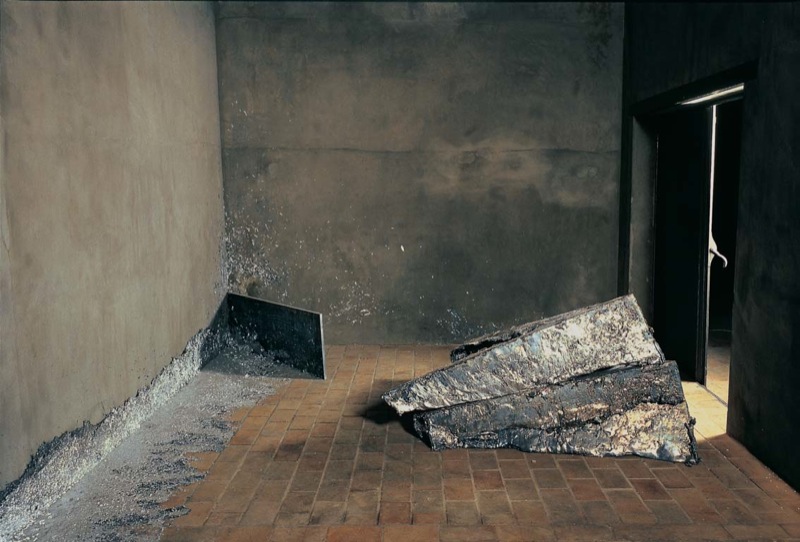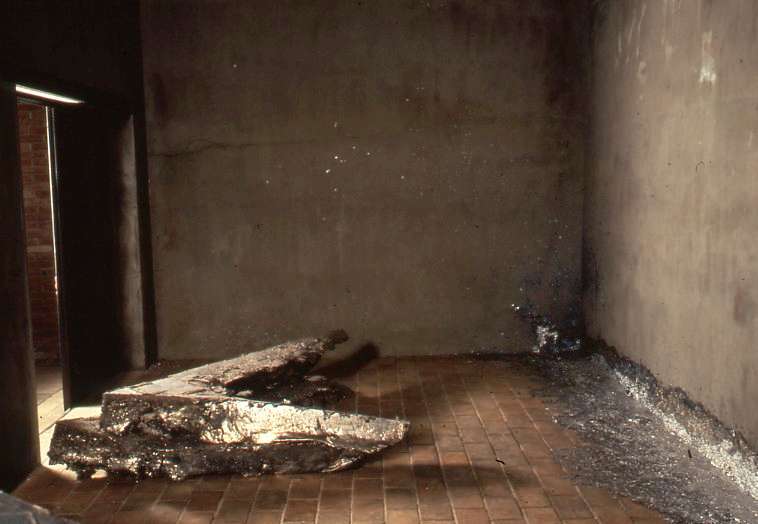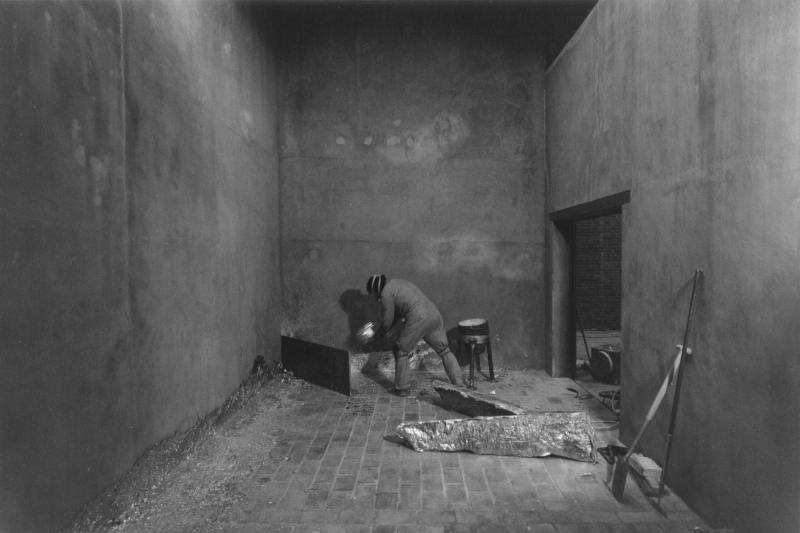Richard Serra
San Francisco USA - New York USA
Gutter Splash Two Corner Cast
1992
lead and steel
room 500 x 740 x 348 cm
1992.RS.02
Gutter Splash Two Corner Cast is the first large work of art that was produced on site for De Pont’s collection. In the spring of 1992, six months prior to the museum’s inaugural opening, Richard Serra was invited to create a site-specific work. The solid and unpolished sculpture connects well with the robust architecture of the former textile mill. In fact Serra has almost literally fused the architecture and the physical quality of the work in one of the former wool-storage spaces.
Gutter Splash Two Corner Cast, a work in two parts, refers to the early Splashings and Castings with which Serra made statements during the late 1960s. For the ‘splash’ segment the artist throws blazing hot, molten lead against the wall, precisely in the area between the floor and the wall. The lead spatters against the wall, drips onto the floor and solidifies like lava into amorphous forms. The edge of lead ultimately marks, like a baseboard, the transition between architectonic surfaces. Also the elements in the second segment – the Two Corner Cast – are casts that remain as residual forms of an action. In the left corner Serra placed a steel partition at a forty-five degree angle, after which he threw the molten lead into the wedge created by this. The lead literally became part of the space. After having produced three wedge-shaped casts in this manner, he moved the partition to the right corner, where another three casts were made and where the partition finally remained standing. The casts were placed in two stacks on the floor. These lead wedges constitute a sharp marking of the architecture and are an exact imprint of a section of the space. At the same time the material has, in its solidification, assumed an irregular shape, and the stacked wedges have the appearance of fragile sculptures in an unsteady balance.
Gutter Splash Two Corner Cast illustrates Serra’s conceptual and process-oriented approach to art. It combines various visual and physical experiences: soft and hard, movement and solidification, action and result, but also the solidity of the material and the monumentality of the space as opposed to the elegance of the form and subtlety of the balance.


